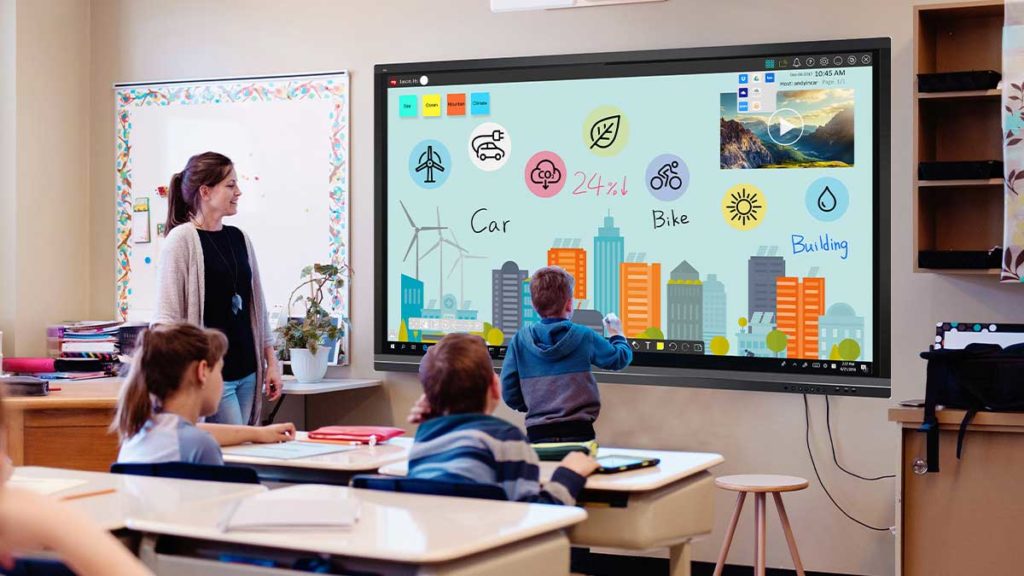This weeks content discusses the importance of designing for inclusion, where it is stated that “human rights law requires education providers to make their services accessible to persons with disabilities” (Right to Education, 2020). Many students, including those without disabilities, experience daily struggles that prevent them from making optimal learning progress, which is why instructors are shifting away from teaching for the “average learner”, and working to make education more inclusive. Using interactive learning, specifically through technology allows for students to engage in the learning process. I think that my group’s interactive learning resource will be successful in engaging all learners, as students will have some choice in the information delivered, and therefore will be the facilitators of their learning. This aims to eliminate personal barriers that some learners may have.
Our interactive learning resource is a digital storybook teaching children grades K-3 about race, which will be presented in class via a smartboard, so that students are able to come up and engage with the material in a hands-on form. Our primary goal for our interactive digital storybook is for each student to gain insight and understanding on their race and other races, through their own and their classmates’ experience with the material. To ensure that all learners’ needs are met, various forms of delivery will be used, such as activities, group discussions, games, videos, all of which will be both visual, auditory, kinesthetic, and some incorporation of reading/writing.

Bates (2019) discusses how high quality learning and interaction can be provided equally well in an online learning context. I think that our interactive learning resource would translate well into online learning if an unexpected event such as a pandemic were to arise. Parents could be sent this digital book, where they would guide their children through the activities. Parents would also benefit in being able to choose subtopics that are specifically relevant in their families culture and values.
It is clear that online learning can feel very lonely, and after reading the material on the need that we all have to interact, I think that to accommodate online learning with our digital story book, the teacher could add a section where students would be able to view their peers’ activity. For example, if each student were to create a family tree, these could then be visible to all students so that they can learn about and interact with other students in the class’s experiences as well. Some possible barriers however could be that because families do not have smart boards at home, they would be doing the digital book learning and activities through a computer, so students would not be able to come up and use the smartboard and navigate through the material through touch. Also, families with low SES may not have access to a computer, or only have one computer for multiple siblings needing to complete schoolwork.
Overall, online learning involves trial and error but with a well designed interactive learning resource, room for feedback, and access to help, interactive learning can be promoted for all types of learners and is a successful way to facilitate an inclusive learning design.
References
https://edtechuvic.ca/edci335/category/designing-for-inclusion/
Bates, A. W. (T. (2019, October 10). 9.6 interaction. Teaching in a Digital Age Second Edition. Retrieved March 2, 2023, from https://pressbooks.bccampus.ca/teachinginadigitalagev2/chapter/pedagogical-roles-for-text-audio-and-video/
Inclusive Education Canada. (2020). Right to education. Retrieved March 4, 2023, from https://inclusiveeducation.ca/learn/right-to-education/
Students participating in a smartboard activity. (n.d.). ViewSonic. Retrieved March 2, 2023, from https://www.viewsonic.com/library/education/benefits-of-interactive-learning/.
Hi Grace! It’s a great idea to make each student’s “family tree” visible. It will help to build a stronger learning community. Increased social presence and a greater sense of community improve the course’s social-emotional climate and enhance the learner’s satisfaction. For example, students have less fear of making mistakes and are more open to sharing ideas with their peers, which leads to more interactions and better learning outcomes.
Hi Grace, I really enjoyed reading about your interactive digital storybook to teach children about race. I appreciate how you mentioned how your resource includes a bunch of activities for different learning styles, such as group discussions, games, videos, and reading/writing. Overall, great job!